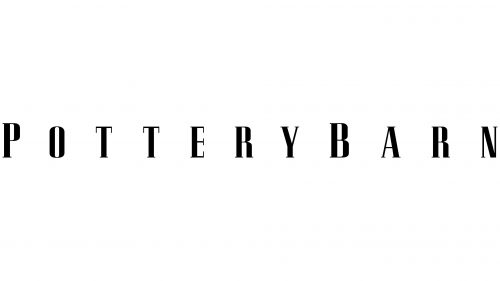The Pottery Barn logo symbolizes quality, comfort, and tradition, reflecting the brand’s desire to offer stylish and functional home goods. The emblem’s design suggests the comfort with which the brand helps people create cozy and beautiful spaces, where every detail plays an important role in creating a harmonious atmosphere.
PotteryBarn: Brand overview
Pottery Barn’s history began in 1949 when brothers Paul and Morris Zeiger opened their first shop in West Chelsea, New York. Initially, the store focused on offering affordable ceramic dinnerware and home décor, primarily from excess inventory. The name “Pottery Barn” was chosen to reflect the store’s casual atmosphere and varied selection.
The store quickly gained popularity among New Yorkers in its early years due to its unique inventory and reasonable prices. The shop offered ceramic products, including dishes, mugs, vases, and other home décor items. Many of these products were purchased as overstock or slightly damaged goods, making them more affordable.
During the 1960s, the company began to expand. The business started adding furniture and home textiles to its offerings and opened several new locations in New York City. This expansion helped attract a broader customer base and establish itself in the home furnishings market. A significant milestone in the company’s growth came in the 1970s with the launch of its first catalog, which allowed the brand to reach customers beyond New York City and across the country. The catalog’s beautiful photography and stylish interiors became a hallmark of the brand.
In the 1980s, the company changed ownership. In 1986, Gap Inc. acquired the business, opening up new opportunities for growth and development. Under Gap Inc.’s leadership, the brand expanded rapidly, opening new stores nationwide and broadening its product range.
The 1990s were a period of significant growth. In 1993, the company was acquired by Williams-Sonoma, Inc., which brought further expansion and innovation. The focus shifted to creating comprehensive collections of furniture and home décor, offering customers complete home solutions. In 1999, the brand launched its website, majorly moving into the growing online retail space. This allowed the company to reach a broader audience and offer customers a convenient way to shop nationwide.
In the 2000s, the company continued to grow and launched several subsidiary brands, including Pottery Barn Kids in 1999 and PBteen in 2003. These new ventures allowed the business to cater to a wider range of age groups and family needs.
Throughout the 2010s, the brand continued to innovate in retail and interior design, actively using digital and social media platforms to engage with customers and promote its products. The launch of mobile apps made it easier for customers to browse and shop.
In 2017, the company introduced Pottery Barn Apartment, a line of furniture and accessories designed specifically for small living spaces. This initiative responded to the growing trend of urbanization and the need for versatile furniture in compact homes.
In 2019, the brand celebrated its 70th anniversary, cementing its status as one of the leading names in the U.S. home goods market. The company continued to develop its online platforms, improving user functionality and expanding options for product customization.
From 2020 to 2022, the company focused on innovation and adaptation. It enhanced its online presence by offering virtual interior design consultations and improving its website and mobile app features. The product line of outdoor spaces and home offices was also expanded to meet evolving customer needs.
As of 2023, the brand remains one of the top names in the U.S. furniture and home décor market. The company continues to invest in expanding its product offerings, improving both in-store and online customer experiences, and further developing its digital platforms. Throughout its history, the company has successfully adapted to changing consumer preferences and design trends while maintaining its core mission of providing stylish, high-quality home products. What began as a small pottery store has grown into a national brand offering a wide range of products for the entire home, consistently delighting customers with its distinctive design aesthetic.
Meaning and History
What is PotteryBarn?
Pottery Barn is an American online retailer of home furnishings and brick-and-mortar. Its stores are located in the United States, Canada, Mexico, and Australia, making it the preferred retailer for those looking to enhance the interior of their homes. Pottery Barn, operated by Williams-Sonoma, Inc. and located in San Francisco, California, offers high-quality furniture and accessories for residential decorating.
1949 – today
The Pottery Barn logo is an example of elegance and simplicity. It consists of the brand name written in a single line, with the font chosen to visually emphasize the two parts of the name: “Pottery” and “Barn.” The designers made the letters large to convey the importance of each word. All the letters are uppercase, which adds a touch of uniqueness and formality to the emblem.
The wide spacing between the letters gives the logo a sense of openness and accessibility while maintaining its exclusive appearance. The font is tall and substantial, with small decorative serifs that resemble little hats or crowns, adorning each letter and giving it a unique shape without overwhelming the overall design.
The emblem’s style reflects the brand’s core values—quality, sophistication, and refinement. The font and its elements reference the brand’s rich history, which originated in the mid-20th century when there was a resurgence of interest in traditional crafts and classic home furnishings in the United States.





